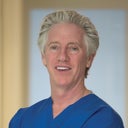Great question. Fat "transposition" to the tear trough is typically performed as part of lower eyelid surgery and involves moving fat from one area in the eyelid or cheek to another area of the eyelid or cheek. The fat is never "removed" from its general location, rather moved slightly. This is done to address the many signs of an aging lower eyelid and is usually not performed in isolation to treat a tear trough deformity. Regarding fat transfer or "fat grafting" to the tear trough, there are multiple things that deserve consideration. I preface this by saying that I do not recommend fat grafting to the tear trough to any of my patients for the following reasons: Fat grafting involves removing fat from one area of the body and transferring it to another, more desirable area. The time and expense of doing this procedure cannot be easily justified when comparing to filling the tear trough with readily available dermal fillers. Sure, you might say that "fat is permanent". This is true to some degree, but this does not mean that you'll never need it done again. Remember...your face and eyes are not static structures..they're constantly changing and aging. What may look good for you now won't be so in the future.Another significant downside of fat transfer to the face is the recovery. It has significant swelling and prolonged redness (inflammation) associated with it. This may take weeks or months to completely resolve.Lastly, keep in mind that the eyelid skin is the thinnest skin on the body. As such, it readily shows almost all imperfections. If fat transfer is not done "perfectly" you may be stuck with a result that you're not happy with. If placing the fat isn't difficult enough, removing poorly placed fat from the eyelids is extremely difficult.Compare all of this with the use of a Hyaluronic Acid filler. A few hundred dollars out of pocket and a 10-15 minute office procedure associated with little risk of bruising, minimal, transient swelling and no inflammation......seems like a no-brainer, right? Sure, there's a good argument that the procedure needs to redone every 6-8 months and this is less advantageous. Again, it's a personal calculation of risk-benefit ratio.Start by finding a Plastic Surgeon, Board Certified by the American Board of Plastic Surgery with experience in these procedures. Sit down for a consult. At the very least, your surgeon can review your options so that you can make a well informed decision on what makes the most sense for you. Best of Luck!



